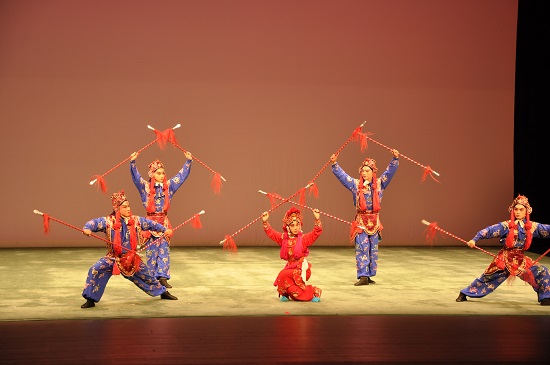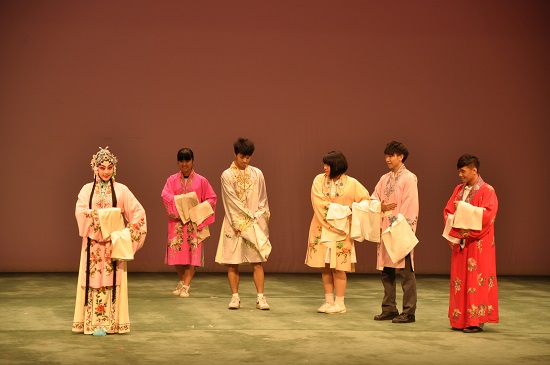30 September 2014
At the invitation of the education and youth affairs authorities of Macau, the Student Peking Opera and Kunju Opera Company of the Traditional Chinese Opera School attached to the Shanghai Theatre Academy (STA) sent a 69-member delegation to visit Macau once again, which arrived in Macau on 21 September. During the week-long visit, the delegation will stage five performances to showcase and promote the traditional Chinese opera, i.e. the quintessence of the Chinese culture, to the middle school students of Macau. This is the 6th times that the Traditional Chinese Opera School has visited Macau to give this kind of performances.
Each performance consisted of seven classic pieces of Peking opera and Kunju opera. Most of the student actors and actresses on this delegation to Macau were the top students majoring in the particular roles, who had won gold and silver medals on numerous occasions in the provincial/municipal and even national-level professional competitions.
In the afternoon of 23 September, the first performance was staged at the Comprehensive Theatre of the Macau Cultural Centre, i.e. the largest and most professional theatre in Macau, with a seating capacity of more than 1000 audience. For the students of the Traditional Chinese Opera School, it was a challenge and, more importantly, an honour as they shouldered the responsibility of promoting and carrying forward the traditional Chinese theatrical art. The theatre was a full house, with the vast majority of the audience being the Year 12 students from the various middle schools in Macau. It’s worth mentioning that many of the young teachers of the Traditional Chinese Opera School also involved in the performance, performing the dual function of teaching and acting.
In order to enable the middle school students of Macau to gain a full appreciation and understanding of traditional Chinese theatre, there was an inclusion of the question and answer links during the performance, thereby, clarifying the audience’s queries about the five major questions, namely, the origin of traditional Chinese theatre, the three major artistic characteristics of traditional Chinese theatre, the four roles (male, female painted face and clown) in traditional Chinese theatre, the techniques of expression based on “five skills and four methods) and the basic composition of the musical band. At the same time, in order to stimulate the interest, there were also specially designed interactive activities, inviting the Macao students onto the stage to practice long sleeve waving following the illustration of the actresses.
With the concerted efforts of all parties concerned, the performance was a great success and was highly appraised by the organizers in Macau, as well as the audience, i.e. teachers and students of Macau.






